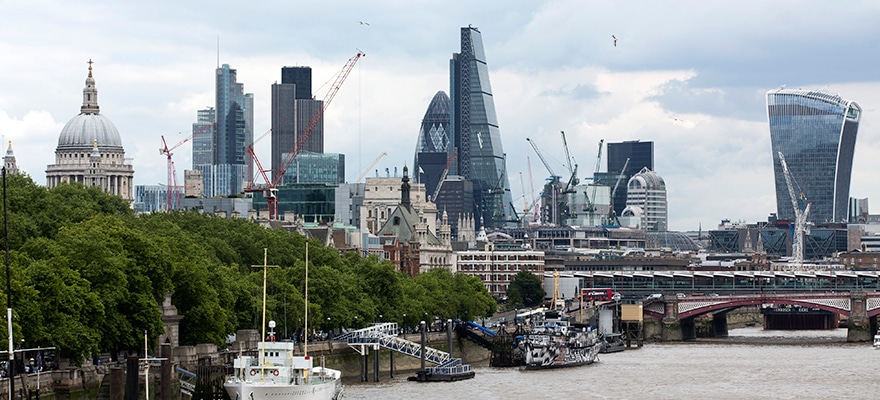This article was written by Matthew Cushen, co-founder of Worth Capital.
Ten year anniversary
As we approach the ten-year anniversary of the financial crisis there seems an interesting contrast between then and now.
10 years ago we had a financial meltdown that had a seismic impact on day-to-day economics and the life of the man in the street (at least a Western developed market street). It was the bankers and the investment community that bought the pain that was then shared across the society, and the age of austerity was born.
Whatever the causes - continuing austerity measures, further globalisation, migration and/or increasing automation – in the developed world we now find ourselves in a period of remarkable political and social turmoil. Only Germany seems to be the exception that proves the rule.
But unlike 10 years ago, the impact of this turmoil on the big investment markets barely registers. Why is market sentiment so benign? Fair enough for the FTSE 100, the impact of our pound continuing to tumble benefits the high participation of foreign earnings. But the S&P, FTSE 250, 350, AIM have all looked for the most part impervious. Even stocks like Merlin Leisure – that you’d expect to be hit by the recent terrorist activities – have stayed buoyant.
Where else to go?
Has market sentiment become so divorced from real life that someone sitting behind a screen in the City will not register the impact of job insecurity, lack of business investment in uncertain times or the pervasive nervousness about whether it is safe on our streets? Or do they genuinely think that consumer and business behaviours are not likely to be impacted? Look at the average P/E ratios and you have to conclude there’s a mighty degree of risk.
So if traditionally ‘safe’ investments now feel much riskier, where else to go?
Investing in bricks and mortar has proved a healthy strategy for a couple of decades. Buying to let in particular, yielded an attractive income and capital gain. However, major tax reform in April 2017 means many landlords will now struggle to make a profit from their properties. Tax relief on mortgage interest Payments has been removed, there are tighter restrictions on the wear and tear allowance and a stamp duty surcharge – all alongside or probably partly causing market nervousness.
But whilst this is an example of the government changing tax to make an investment class less attractive, they have also been very actively making another asset class much more attractive (although not necessarily shouting about it).
Attractive asset class
The Enterprise Investment Scheme is designed to help mitigate some of the risk of investing in early stage businesses. When I first started investing in start-ups, back in 2004, it gave the investor 20% of their investment back as a relief against income tax. I thought that was hugely attractive. But in 2011 the relief was increased to 30%. And in 2012 the related Seed Enterprise Investment Scheme (SEIS) was introduced. Under SEIS, investing in very young businesses attracts 50% income tax relief. Yes, this really does mean that you get half of your investment knocked off your tax bill (this year or in many cases last year). Then there are a bunch of other reliefs including for capital gains tax and inheritance tax exemption.
So EIS and especially SEIS make investing in a high-risk asset class that much less risky. There are various ways to invest under SEIS. We have seen an explosion in Crowdfunding – with investors picking their own businesses to invest in, in some cases with adequate information and effective due diligence, in other cases less so. Even those doyens of old school investment banking, Goldman Sachs, have dubbed crowdfunding as “the most disruptive models of finance”. There are some ‘watch-outs’ – valuations are looking increasingly frothy; sometimes due diligence is patchy and the average number of investments per investor is only 1.3 (according to Seedrs at least). Given the binary nature of seed investment, i.e. do well or go bust, it is foolish not to develop a diversified portfolio of investments.
Reassessment
Another way to invest is through funds. Well established in the EIS world – where the investments are not far removed from VCT funds – there are now a dozen or so SEIS funds, and they are available to the man in the street. I’d contend that a portfolio of investments picked by an experienced seed investor, with meticulous due diligence, and then overseen by an experienced entrepreneur will stack the odds of not only benefiting from the tax reliefs but also the potential for healthy returns.
While EIS and SEIS are government incentives that support both entrepreneur and investor, there is much more to be done to spread the work about the benefits. And I’d say this is more and more important and beneficial as we should all be reassessing the prevailing view, and quantifying the narrowing gap, between traditional low risk, e.g. large cap equity, and high risk alternative investments, e.g. seed investment.






















